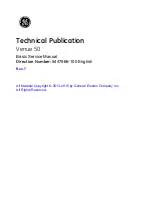
ENDORPHIN.ES® – MILKY WAY
Module design by Andreas Zhukovsky
Collection Spring/Summer 2019
Made in Barcelona
Special thanks to Xavier Galai
for additional code and crazy ideas.
Follow, like, post and tag us at instagram:
endorphin.es
or contact us:
•
HALL REVERB:
‘Cabin fever’ knob defines the decay of the reverb or hall size. Holding ‘tap’
for longer than 1 second enables the secondary function for ‘cabin fever’: fixed hi-pass
filter to cut off low frequencies and have more ‘air’ in the final output.
•
SHIMMER REVERB
is a variation of the hall reverb with a pitch shifter to create choir-like,
huge and unrealistic spaces. The primary ‘cabin fever’ function defines the decay and the
secondary function defines the amount of pitch-shifter mixed into original reverb.
•
STEREO ROOM REVERB
recreates a sort of stereo room ambience. Primary ‘cabin fever’ parameter
defines room size and the secondary defines the stereo spread of the reverb, from mono up to a
huge stereo spread.
•
PLATE REVERB.
The primary ‘cabin fever’ defines the decay of the reverb. In real life equivalent
this is the distance from the pickups to the metal plate which is how long the tail of the reverb is
present. Secondary parameter defines the amount of pre-delay to distant sounds in ambience.
cabin pressure
volume
audio in
in 1
in 2
VCA
VCA
type
out 1
out 2
audio out
in1_trim
Final manual
volume control
Final
AC-coupled
audio outputs
in2_trim
I
II
III
IV
V
VI
VII
VIII
When LED is semi LIT, it shows one of V...IV chosen effect types.
When LED is full LIT, it shows one of I...IV chosen effect types.
Only one effect type available at once.
type
Pressing the ‘type’ button shortly
cycles thru all effect types.
cv in
cv in
0...+5V meta CV input:
Positive CV voltages will scan
over current bank of 8 effects.
-5...0V meta CV input:
Negative CV voltages will scan
over inactive bank of 8 effects.
cabin
fever
cabin pressure
Manual ‘cabin fever’ control
with its CV input , range 0...+5V
Manual ‘cabin
pressure’ control
Unattenuated
meta CV input,
-5...+5V range
I
II
III
IV
V
VI
VII
VIII
0...0,625V...................1,25V...2,5V
3,125V...3,75V...............4,375V...5V
Approximate table of voltages
which correspond to chosen
filter type with applied CV.
SIMPLE MONO OPERATION
audio in
in 1
in 1
out 1
audio out
audio in
in 1
in 1
in 2
out 1
out 2
audio out
Processed audio with FX
into mixer, other FX, etc.
Waveform from
the VCO - i.e
Furthrrrr Generator,
mono source
MONO TO STEREO OPERATION
Waveform from
the VCO (mono)
internally
normalled to ‘in 2’
Separate
effect outputs:
‘out 1’ (left) and
‘out 2’ (right)
TRUE STEREO OPERATION
audio in
audio out
Separately processed outputs:
‘out 1’ (left) and ‘out 2 (right)
Routed into a stereo module
(i.e. Mutable Instruments
Clouds)
audio in
out 1
out 2
audio out
MILKY WAY QUICK PATCH EXAMPLE
Unattenuated CV input
for VCA control, range 0...+5v
cv in
cv in
cabin
fever
cabin pressure
VCO acts as an audio source
(i.e. sine/fold output from Godspeed )
Unipolar ouput of the envelope
opens the VCA audio input.
Adjust to approx. 12 o'clock
to listen the reverb action.
Then you can apply LFO there.
Adjust reverb tail decay to
own taste, start from 12 o'clock.
Adjust the volume
to avoid clipping
on heavy applied effects.
Choose simple
reverb, effect #1
from any of the fx banks
by pressing ‘type’.
Left/right outputs
to the mixer or PA
EFFECT TYPES
META META META META META META META META
Press both buttons for 1 second
to enable meta scanning.
normalization in1 into in2
Separately routed inputs :
‘in 1’ (left) and ‘in 2’ (right)
multi effect processor:
16 effects in 2 banks
tap
extra cream*
extra caramel**
Adjusts the dry/wet level of the effect.
Adjusts secondary effect parameter:
decay of the reverb, feedback of the delay, etc.
Manually tweaking the ‘cabin pressure’ and ‘fever’ knobs
act as attenuators if plugs are inserted.
cabin fever
* and ** are to be revealed soon
All CV inputs
range: 0...+5V
type
tap
+
Short both buttons press changes the bank:
• red blink on changes
indicates airways fx
• blue blink on changes
indicates darkways fx
AIRWAYS BANK
DARKWAVES BANK
Holding ‘tap’ button for 1 second
enters secondary effect setting
depending on the effect type.
•
GATED REVERB
is based around plate reverb with noise gate. The primary ‘cabin fever’ defines
the reverb decay, but the secondary defines the threshold of the noise gate.
Noise gate’s attack and decay are fixed and chosen experimentally to fit most musical styles.
•
SPRING REVERB:
The primary ‘cabin fever’ defines the decay of the reverb. With the ‘tap’ button
you can simulate a sound as if you pluck the real spring with your finger. The secondary function
is tied to the ‘tap’ button’s ‘pluck the spring’ feature and defines the DECAY of how fast the spring
will calm down after manually plucking it.
•
PING-PONG DELAY
is a stereo clocked delay. A ‘tap’ is usually three or more short clicks on the
‘tap’ button. The primary ‘cabin fever’ defines the feedback of the delay or repeats. The secondary
defines the clock division of the incoming tap/clock: 1, 3/4, 2/3, 1/2, 1/3, 1/4, 1/8
•
FLANGER:
The ‘cabin pressure’ knob sets the amount of delay. With primary ‘cabin fever’ we set
the LFO speed. The secondary defines the feedback. Playing with that three parameters allows
to achieve sweeping, airplane engine alike sound with a pretty wide range.
•
RING MODULATOR
multiplies the signal with an internal sine wave oscillator. ‘Cabin pressure’ defines the
amount of modulation and ‘cabin fever’ defines the speed of the oscillator. Secret ingredient – feedback!
Its amount is controlled by the secondary ‘cabin fever’ and brings special dirtiness to the sounds.
•
OVERDRIVE:
‘Cabin pressure’ knob adjusts the drive amount with volume compensation, while ‘cabin fever’
defines the tone control as usually found in guitar pedals. The ‘tap’ button makes the effect active or
bypassed, like the switch on a guitar pedal – and so does ‘cabin fever’ latching trigger CV input.
•
PEAK COMPRESSOR:
‘Cabin pressure’ knob defines the threshold from -90dB to 0dB (fully CW). Primary
‘cabin fever’ sets the amount of gain reduction (ratio) from 1 to 25. Secondary parameter defines the
attack, from 1 to 200 msec. Release is always ‘auto’. ‘C. fever’ CV input is an unattenuated side-chain input.
•
FREEZER/LOOPER:
When ‘tap’ is pressed (or ‘cabin fever’ CV gate is ON), the audio is looped by the grain
length defined by the ‘cabin fever’ knob – and with the speed – defined by ‘cabin pressure’ knob or
CV – applied.
type
tap
+
hold
both
for
meta
I
II
III
IV
V
VI
VII
VIII
-2,5V...-1,25V................-0,625V...0V
-5V...-4,375...............-3,75V...-3,125V
active
FX
bank
inactive
FX
bank
side/fold
trip select
furthrrrrrr
Play with ‘furthrrrrrr’
knob of the waveshaper.
Set the envelope to ‘cycling’
by turning the trip selet to
the right and adjust decay
amount around noon.
volume
type
in 1
in 2
Audio inputs adjustment level:
modular level at CCW or line level at CW
in 1
in 2
out 1
out 2
Input 1 internally connected,
or so-called ‘normalled’ to input 2
when nothing is plugged into input 2.
•
SPRING REVERB.
The primary ‘cabin fever’ defines the decay of the reverb. With the ‘tap’ button
you can simulate a sound as if you pluck the real spring with your finger. The secondary function
is tied to the ‘tap’ button’s ‘pluck the spring’ feature and defines the decay of how fast the spring
will calm down after manually plucking it.
•
PING-PONG DELAY
is a stereo clocked delay. A ‘tap’ is usually three or more short clicks on the
‘tap’ button. The primary ‘cabin fever’ parameter defines the feedback of the delay or repeats.
The secondary defines the clock division of the incoming tap/clock: 1, 3/4, 2/3, 1/2, 1/3, 1/4, 1/8
•
TAPE ECHO
is a delay with 3 fixed playback heads. Primary ‘cabin fever’ parameter defines the
delay repeat rate which is the speed of tape. The ‘tap’ button works in a limited frequency range
of manual tapping and defines the amount of feedback. The secondary works as a divider for
the incoming clock.
•
CHORUS:
Primary ‘cabin fever’ knob defines the feedback amount. In average amounts, it creates
typical unison effect however in full CW it goes to an infinite feedback resulting unrealistic
ambient. Secondary parameter defines the modulation depth, which is 'full on' by default.




















